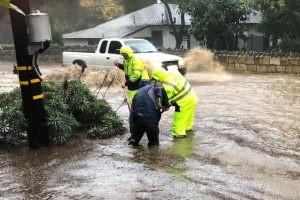In situations when the meteorological conditions are favourable for the development of severe thunderstorms that could, in turn, create tornadoes, the national weather forecasting agency of the said country issues a tornado watch.
The warm side of the boundary line, or front, that separates cold, dry air from warm, moist air is where thunderstorms are most likely to form.
However, thunderstorms not only have the potential to develop into a tornado, but they could also contain large hail, straight-line winds, intense rainfall or flooding that pose a similar damage risk as the attendant tornado threat.
According to the National Weather Service, when a tornado watch is issued, the receivers and people in the area are expected to discuss their emergency plans and check for supplies and a safe room.
ALSO READ | Why is China facing record floods?
Watches are issued by the Storm Prediction Center for counties where tornadoes may occur. The watch area is typically large, covering numerous counties or even states. However, sometimes the tornadoes can impact an area near the watch area.
How do forecasters issue a tornado watch?
In the United States, forecasters over the years have learned to carefully monitor the wind profile in regions of instability and to estimate how temperatures and winds will evolve through the course of a day, while at the same time tracking the movement and intensity of the jet stream.
Forecasters can usually predict where conditions will be favourable for tornado formation one to seven hours ahead of time using modern observing systems such as vertically pointing radars (called wind profilers) and imaging systems on satellites that can measure the flow of water vapour through the Earth’s atmosphere.
This information is transmitted to the public as a tornado watch.
What is the difference between a tornado watch and a tornado warning?
As discussed earlier, a tornado watch is issued when the conditions are favourable for the development of severe thunderstorms that could, in turn, create tornadoes.
Meanwhile, a tornado watch is issued when a tornado has been spotted either visually or on a weather radar.






